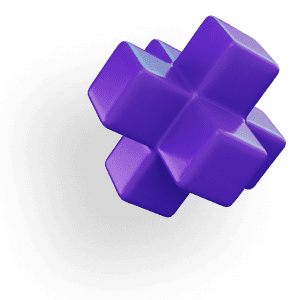HOW TO USE GPU
Autodesk Revit (v.2021 and newer)
Autodesk Revit relies heavily on CPU performance, but enabling GPU acceleration can improve graphics performance, especially in 3D views and navigation. By leveraging the GPU for certain tasks, Revit becomes more responsive, particularly with larger, complex models.
How to Enable GPU Acceleration in Revit
Launch Revit
Open Revit from its default installation path:C:\Program Files\Autodesk\Revit 20##\Revit.exeEnable Hardware Acceleration

Go to File > Options.
Under the Hardware tab, check Use hardware acceleration.
Also, check Draw visible elements only to optimize performance by focusing on visible content in the viewport.
Enable GPU in the User Interface

Navigate to the User Interface tab in the Options dialog.
Ensure Use hardware graphics acceleration if available is selected.
These settings allow Revit to take advantage of your system’s GPU for smoother navigation and improved 3D performance, reducing the load on the CPU.
Top Tips to Speed Up Revit Performance
Keep GPU Drivers Updated
Regularly updating your NVIDIA or AMD drivers is essential. Updated drivers improve compatibility and performance for hardware-accelerated tasks in Revit. Certified workstation-class GPUs are highly recommended over gaming cards for stability and optimization.Optimize Model Complexity
Large or overly detailed models can slow down performance. Use the Purge Unused tool to remove unnecessary elements and clean up your project files. Additionally, reduce model complexity by using Section Boxes to limit the visible content in 3D views, improving both GPU and CPU performance.Use Efficient Display Modes
When working in complex models, switch to simpler display modes like Shaded or Consistent Colors rather than Realistic to reduce strain on your system. Disabling unnecessary features like shadows or reflections can also improve responsiveness during 3D navigation.Utilize SSD Storage
Storing your project files on an SSD rather than a traditional hard drive significantly speeds up load times, improving overall performance when opening large projects and working with heavy datasets.
Autodesk Revit System Requirements
Minimum Requirements:
Operating System: 64-bit Microsoft® Windows® 10 or Windows 11.
Processor: Single- or Multi-Core Intel®, Xeon®, or i-Series processor or AMD® equivalent with SSE2 technology.
Memory (RAM): 8 GB.
Display Resolution: 1280 x 1024 with True Color.
Graphics Card: DirectX 11 capable graphics card with Shader Model 5 and 2 GB of video memory.
Disk Space: 30 GB free disk space.
Pointing Device: MS-Mouse compliant.
.NET Framework: Version 4.8 or later.
Recommended Specifications:
Processor: Multi-Core Intel® Xeon® or i-Series processor or AMD® equivalent with SSE2 technology.
Memory (RAM): 16 GB or more.
Graphics Card: DirectX 11 capable graphics card with Shader Model 5 and 4 GB of video memory.
Display Resolution: 1920 x 1080 or higher.
Disk Space: Solid State Drive (SSD) with at least 30 GB free disk space.
Meeting these specifications will help you get the most out of Autodesk Revit, ensuring efficient workflows and high-quality outputs. Keep in mind that more complex projects, especially those involving large datasets or intricate designs, will benefit from higher-end hardware configurations.
Top Recommended GPUs for Revit

NVIDIA RTX A2000
A solid professional-grade GPU, the RTX A2000 offers a good balance of power and affordability, providing reliable performance for BIM modeling and 3D navigation in Revit.NVIDIA RTX 3060 Ti
This mid-range card offers excellent performance for Revit users handling moderately complex models, providing a strong balance between cost and performance.NVIDIA RTX A4000
For professionals dealing with very large, intricate models, the RTX A4000 delivers high performance and stability, particularly when working with high-resolution views or running multiple large files.
By enabling GPU acceleration and applying these performance tips, you can improve Revit’s responsiveness and overall performance, especially when handling large models and complex 3D views.
Enjoy Faster Renderings and Workflow with Vagon
When the goal is to cut down rendering times and speeding up your workflow, every second saved is a victory. But what if you could do more than just save a few seconds?
With Vagon’s cloud PCs powered by 48 cores, 4 x 24GB RTX-enabled NVIDIA GPUs and 192GB of RAM, work on your projects faster than ever. It’s easy to use, right in your browser. You can transfer your workspace and files in just a few clicks and try it yourself!






